
|   |

|   |
Bhoopaala Bharatham: History lesson, dance and mime (Part 1) Text & pics: Lalitha Venkat e-mail: lalvenkat@yahoo.com August 7, 2013 The annual week long Bharatanatyam festival (July 28 to August 2) organized by Natyarangam, the dance wing of Narada Gana Sabha in Chennai, has been an educative one conveying so much knowledge to dancers and viewers alike through varied themes. Every year a new theme is chosen. This year, the 17th edition titled Bhoopaala Bharatham (Kings as protectors of the land and people) was about the chosen few rulers in Indian history who have been hailed for their good governance, doing good to the people, ensuring a peaceful kingdom and significant interventions as patrons of artistic talent in various fields. These kings were not only the protector and nurturer of the arts, they were themselves gifted dancers, musicians and poets of repute. One may not see grandiose palaces of these kings now but they left behind a precious legacy in the form of inscriptions, monuments like temples that stand to this day and many literary works. Before each evening’s performance, the concerned resource person spoke about the research into the subject followed by the performance by young as well as established artistes. It was like a history lesson interpreted through dance and mime. 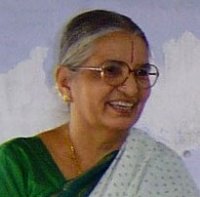 Dr. Prema Nandakumar Day 1: The inaugural evening commenced with honouring of Guru Sudharani Raghupathy followed by conferring the Sudharani Raghupathy Endowment Award on mridangam vidwan Karaikudi R Krishnamurthy, Obul Reddy Award for senior Bharatanatyam dancer on Parvathi Ravi Ghantasala, Vasanthalakshmi Narasimhachari Endowment Award for talent promotion on Divya Shiva Sundar and Special Award of Excellence on 82 year old Devaraj Sanjeevi Aiyellu whose dance costumes have dazzled for 6 decades. Resource person for the evening, Dr. Prema Nandakumar gave a wonderful scholarly talk punctuated with poetry on the evening’s personalities Ganga Devi and Krishnadeva Raya to be portrayed in VIJAYANAGARA VAIBHAVAM. Being in chaste Tamil, many in the audience were at a disadvantage to comprehend. Fortunately, concise English announcements were made by B Kannan at the start of the program to enlighten the audience. Dr. Padma Subrahmanyam, Gayatri Kannan and R Vineeth portrayed the story of a queen, a king and a lineage in a narrative style, starting with war and ending with a celestial wedding. 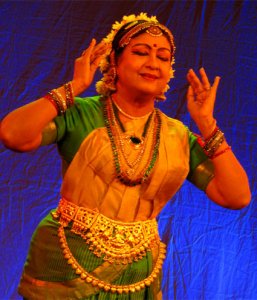 Padma Subrahmanyam 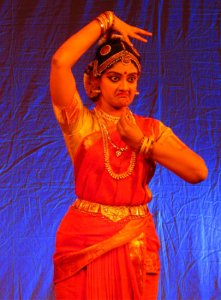 Gayatri Kannan Part one of the presentation was based on a thesis by Gayatri Kannan on the brave queen Ganga Devi, whose story is not very well known; hence the choice was to recognize an unsung hero of our history. She even accompanied her husband to the war front. In her poetic Sanskrit narrative Madhura Vijayam in the 1300s, she wrote about the brave exploits of her husband King Kampana, prosperity of the kingdom as well as about the hardships of the people after being invaded by Muslim rulers, the destruction of monuments, Hindu art and culture. Ganesha Vandana by Gayatri was in honor of the victory of Ganga Devi’s husband King Kampana in war. The young couple goes to Kanchipuram. An extraordinary lady, none other than Goddess of Madurai portrayed by Padma Subrahmanyam, appears in court and tells about the downfall of Srirangam to Muslim invaders, how the place was in rubble and overgrown with jungle, how sacred homams were replaced by fires cooking meat, how the mridangam beats were replaced by howls of jackals, how priests in Madurai were in shackles and the arts silent, how the sacred River Tamaraparani was mixed with the blood of slaughtered cows. Speaking about the magical Vishwakarma sword, she gives it to Kampana and urges him to advance on Madurai and defeat the sultan. In the brief fight scene, Gayatri neatly portrayed the headless sultan trotting off into the side wings. Madurai Sultanate fell and the city was revitalized to its old glory and culture. 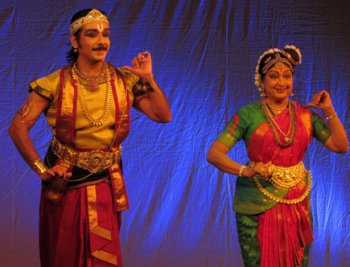 Vineeth & Padma Subrahmanyam
Part two was an excerpt inspired by the study of the English translation by Srinivas Sistla of the scholarly Telugu poem Amuktamaalyada penned by the great ruler Krishnadeva Raya, a war hero, able statesman and administrator whose rule has been hailed as a golden period in our history. A scholar well versed in ancient literature and a socially conscious ruler, he had said back then that the government should not interfere in the workings of religious institutions. Krishnadeva Raya, a Kannadiga, was a singer of great repute. He went to Srikakulam to worship Andhra Vishnu, who in a dream commanded him to compose the story of the Tamil girl Godha Devi and the garland in Telugu. Vineet and Padma portrayed the role of Vishnuchitta/Vishnu and Godha respectively. Vineet’s simple quick change of head band served to distinguish different characters. Godha’s merging into Vishnu was depicted subtly. The story ended with a tasteful depiction of the distraught Vishnuchitta finding an illusory Godha and the marriage between Godha and Vishnu taking place at Srivilliputtur. On the whole, nice costumes, good music and a neat presentation of both stories, but one felt the younger female dancer would have been a better pair for the young Vineeth. Also, the white screen as backdrop served no purpose except to distract with loud colorful lighting. Compilation, music and choreography were by Padma Subrahmanyam. The wonderful music ensemble included Radhika Muthukrishnan and Mahati Kannan on vocal, mridangam by Thanjavur Senthil Kumar, veena by B Kannan, flute by Pathanjali. 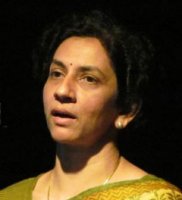 Dr. Chitra Madhavan Day 2: The chosen theme on MAHENDRA and NARASIMHA PALLAVA was elaborated beautifully with slides by Dr. Chitra Madhavan. She gave archeological and sculptural evidence of the many cave temples, inscriptions, Mahendra Varman’s pioneering work in rock cut temple architecture, the monolithic rock-cut cave temple at Mahendravadi, how the 5 rathas at Mamallapuram founded by Narasimha Varman (who was known as Mamalla) dating to 7th century were all actually temples for deities and nothing to do with the Pandavas, the beautiful sculpture in the Mamallapuram cave temples and so on. Though not much is written about it, the Chinese traveler Hiuen Tsang visited Kanchi and stayed on for 4 years, and mentioned the thriving of many faiths of Buddhism, Jainism and Hinduism in the south. Her presentation was so enthralling that the audience wanted more and gave her a rousing deafening applause. The Pallavas ruled over a vast empire with Kanchipuram as its capital. About their greatness, there are ample sources in the form of inscriptions on temple walls, Tamil and Sanskrit literature, copper plates and so on. Mahendra Varman I and Narasimha Varman I outshone the other Pallava rulers. Mahendra Varman was a man of many titles like Vichitrachitta, Sankeerna Jaathi, each richly deserved. Known as Chitrakara Puli (tiger among painters), he even wrote a treatise Dakshinachitra on paintings. A great warrior, playwright and Sanskrit scholar, his poem is etched on a cave wall in Trichy. There’s even an inscription that says he was a gifted musician too. 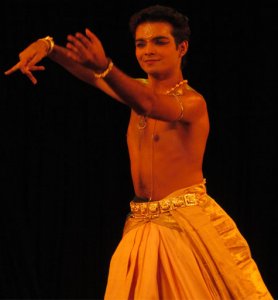 Bhavajan Kumar 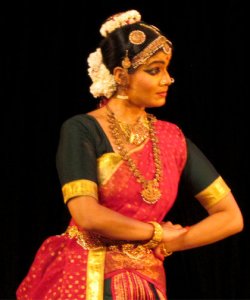 Divya Shiva Sundar Bhavajan Kumar and Divya Shiva Sundar started their recital by describing Kanchipuram during the reign of Mahendra Varman. Roads are decorated for the king’s entry, girls can be seen walking on the roads selling flowers to passersby, the bazaars are filled with citizens who sing, drink and dance, roads are filled with the sound of drums and music. Next was a description of the king from a poem Mahendra Varman wrote about himself in the beginning of his one act Sanskrit play Mattavilasa Prahasanam where he, the son of the valorous Simhavishnu Pallava, compares his might and power to that of Lord Indra and says if Kubera were to see his wealth he would bow his head in shame. After extolling the greatness of the king as a sculptor, wrestler, painter, connoisseur of the arts and a great warrior, his various titles such as Shatrumalla and Vichithrachitta, Bhavajan and Divya presented a humorous scene from Mattavilasa Prahasanam meaning “the farce of drunken sport” about the hypocrisy of some contemporary religious practices depicted in a light vein. The play is set in Kanchi and revolves around the drunken antics of a kapalika mendicant Satyasoma and his woman Devasoma. They enter the cemetery, begin to drink and make merry. The intoxicated kapalika begins to explain the beauty of his wife saying “the beads of sweat over your creeper like eyebrows resemble pearls from the ocean on your moon like face.” Instead of embracing his wife, the drunk Satyasoma ends up hugging a pole nearby and calls out for Somadeva instead of Devasoma. Hearing this, his wife is heartbroken and accuses him of cheating. To console her, he says it was a slip of his tongue under the influence of alcohol and promises not to touch alcohol hereafter. Devasoma falls at his feet and tells him his tapas will be ruined if he stops drinking and they will not attain moksha. Praising Lord Shiva, they continue to drink. Without overdoing it, the charming dramatization and delicate moves of inebriation delighted the audience. Mahendra Varman was a Jain before he converted to Shaivism after meeting the devout Appar. Appar enters singing “maasil veenaiyum” and begins to convert all the Jain subjects into Shaivites. When Mahendra Varman enters his balcony, he is furious to hear his Jain subjects chanting the name of Shiva, and orders his guards to bring the man responsible for this sin to his court. When Appar tries to convince the king to embrace Shiva to attain moksha, the enraged king orders Appar to be thrown into the ocean tied to a massive boulder. Appar emerges from the ocean unharmed. The king is still not convinced that it is the divine grace of Shiva that has saved this saint. He is deeply disturbed by this and tries to concentrate on his Jain prayers but is haunted by the chant of "Om namashivaya." He ultimately gets realization and embraces Shaivism. He orders for temples to be built for Shiva, Vishnu and Brahma. He also orders a tank to be built in Mahendravadi, to fix roads, give free land to brahmins and build schools for children. More instrumental and less text made the item enjoyable. In part two of the recital, Narasimha Varman goes to his father’s temples and draws inspiration to build his five rathas and wall relief of Arjuna’s Penance in Mahabalipuram. When Mahendra Varman was defeated by Pulakesi II at Vatapi (Badami), he lost his northern provinces to the Chalukyas and retreated to Kanchi, but was never the same again till he passed away. In 630AD, his son Narasimha Varman I decided to avenge his father’s defeat and conquered Pulakesi II at Vatapi, victoriously bringing the dwaja sthambam and the Vatapi Ganapathy to Kanchi, depicted on stage to strains of “Vatapi Ganapathim.” The Pallavas had an equally strong navy like their army. The Sinhalese prince Vanavarma helped Narasimha Varman in his war against Pulakesi II, and as a return favor, the Pallava king helps by sending his troops to Lanka but Vanavarma regains his kingdom only to lose it again. This time, Narasimha Varman himself goes to war and gets the kingdom back for Vanavarma, thus his victory in Lanka is compared to that of Rama. The recital ended with a passage from Mattavilasa Prahasanam that says the Pallavas emerged for the welfare of mankind. “As long as there is fire in this world, as long as cows give milk, and as long as the stars and moon exist, this world will be ruled by the great Pallavas.” 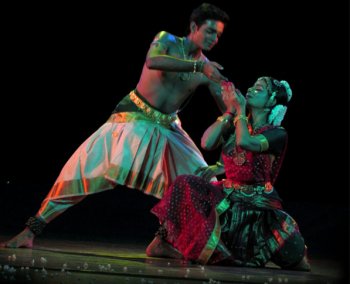 Bhavajan & Divya
Shiva
Sundar
The vibrant battle scenes were enacted with attractive choreography and vigour by the dancers. Incorporating some of the story elements in a thillana sequence, Bhavajan and Divya held the audience attention with their engaging and energetic performance. The music ensemble was Krithika Arvind on vocal, Shobana Bhalchandra on nattuvangam, Vedakrishnan on mridangam, Sruti Sagar on flute and Kalaiarasan on violin. The beautiful music was composed by Rajkumar Bharati. What were the challenges in working on this theme? Says Bhavajan, “Choreography for this production was not easy. We had to figure out a way to make the production interesting and not become only a history lesson. Also, we had very limited amount of literature we could use. All the sahithyams used in our show were not written past the 7th century. Thanks to the guidance of our resource person Chitra Madhavan, we got inscriptions found on the temple walls built by Mahendra Varman, also the episode about the king’s conversion were taken from Thevarams. Personally, this has made me look at temples in a completely new light. I’ve been to Kanchipuram many times, but after this work started, I went to the Varadharaja Perumal temple there, which was built by a much later Pallava, but nonetheless, I was unconsciously paying attention to the finer details. I think what we enjoyed most in this production was the Mattavilasa Prahasanam. Choreography for this was not exactly set. We just took things as they came according to how we felt at that moment. Only the number of times was set for the musicians but the dancing was mostly manodharma. Narasimha Varman’s episode was the most difficult because unlike his father, this king did not write any literature and had only one inscription about his victory of Lanka and Vatapi. Whatever else we had was his titles. Overall, working on this was deeply gratifying to know this land of India has seen such great rulers. I’m still mind boggled at the fact of how they could have even done most of these things with the limited amount of technology they had back then. Even today with the massive equipment we have, can someone build what we see today in Mahabalipuram from a single large block of stone? I doubt it. We thank Natyarangam for giving us this chance to explore and present the greatness of these Pallava rulers.” 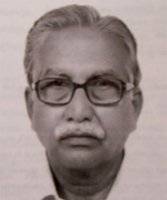 Dr. Kudavayil Balasubramanian Day 3: The evening started with a learned talk and slide show by resource scholar Dr. Kudavayil Balasubramanian who hailed father and son RAJA RAJA CHOZHA and RAJENDRA CHOZHA, who he says have unfortunately not been given due recognition as two of the greatest kings in world history and supporters of the arts. Raja Raja’s wizardry at water management, plan and building of the great Brihadeeswara temple, the sculpting of karanas as performed by Lord Shiva himself in the temple, the paintings of dancers, the inscriptions on the temple walls of the nearly 1200 names of the dancers, musicians, entertainers, sculptors and artists, the various Nataraja sculpture in bronze and stone at Thanjavur and Gangaikondacholapuram and their salient points were vividly portrayed through slides and accompanying commentary. The beautiful bronze sculpture of Raja Raja and his queen which had been in the Big Temple till 1905 somehow found its way to the Calico Mills Museum in Gujarat and a move is on to bring them back to their original place. 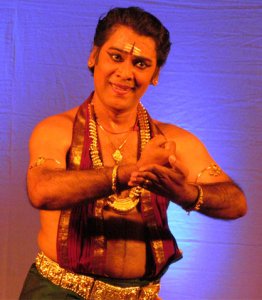 A Lakshman 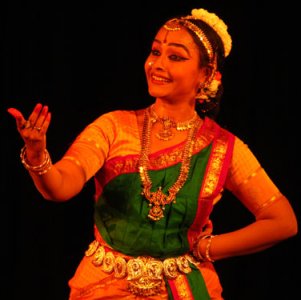 Divyasena A Lakshman and Divyasena commenced their recital with a summary of Raja Raja’s accomplishments like the Cauvery River irrigation system, laws of equality, and conquest of neighbouring kingdoms. The birth of Raja Raja Chozha was narrated, followed by the entry of Lakshman as Raja Raja with big moustache and hairpiece topped by a flashy crown, showing his admiration of beauty by generously giving a beautiful dancing girl a necklace. The girl falls in love with him and pines away. When royal processions passed by, the elders used to lock up love struck girls inside so that they did not bring shame to the family. This sringara episode was followed by deeds of valour on the warfront. Raja Raja's army swept through the Chera kingdom like a thunderstorm across a plain. He destroyed towers, mountains, and crossed the sea into the northern part of Sri Lanka and defeated the king. This was depicted with dheem taka dheem taka dheem sequence. Raja Raja’s building activity was shown using the Mallari for construction of the Brihadeeswara Temple, the outer prakarams with the nandi statues, the gopurams, etc. Raja Raja was a great patron of arts and had 400 devadasis associated with the Brihadeeswara Temple. Divyasena (as a rajadasi) danced a Kauthuvam. Lakshman then portrayed the story of the Panniru Thirumurai. As a great devotee of Shiva, Raja Raja visited as many of the kshetras as possible. He went to the Tiruvarur temple and heard a few thevarams sung by the oduvars. He was mesmerized by the divine music, and asked if there were any more compositions like that. The oduvar replied that these were the only ones that were left, and the rest were lost. Raja Raja searched throughout the entire kingdom to see if the other thevarams could be found. Finally, an old man informed the king that the thevarams were locked in a secret room in the Chidambaram Nataraja Temple. Immediately, Raja Raja went to Chidambaram only to find that the room was sealed. The dikshitar informed them that the room could only be opened if the 3 nayanmars - Appar, Sundarar, Sambandar - are present. Raja Raja cleverly thought to have 3 life-sized figures of these nayanmars made and brought to Chidambaram. The room was opened, and inside he found the Panniru Thirumurai manuscripts under a pile of mud and white ants. He revived the thevarams from the manuscripts and had them rendered in all the Shiva temples in his kingdom. After the rather lengthy part one that made the audience restless, the part two was ultra brief, perhaps because Rajendra Chozha, the son of Raja Raja, was more a warrior. He expanded the Chola empire all the way until Cambodia through a series of wars. He further developed the Chola navy, and they became extremely powerful. The Chola empire prospered through trade and military conquest under Rajendra's rule. Primarily known as a warrior more than a patron of the arts, he built his own smaller version of the Brihadeeswara Temple in Gangaikondachola-puram. The recital ended with a thillana summarizing Raja Raja and Rajendra Chozha. The interpretation of such a grand story somehow was fragmented and did not get through to the audience, aided in part by the crashing of the laptop that was to project slides during the performance, so the white screen with garish color projected on it was superfluous and only served as a distraction. The accompanying musicians were Padma Seshadri sisters and TH Thyagarajan on vocal, Sasidaran on flute, Nellai D Kannan on mridangam (who started off on a loud note and fortunately tapered down the volume to normal decibel level as the recital progressed), Haribabu on nattuvangam, Kalaiarasan on violin and Saravanan on special effects.  Divyasena & Lakshman
A Lakshman talks about the difficulty in working on his theme. “When I saw the title Raja Raja Chozhan, all I could imagine was the film starring Shivaji Ganesan in the title role. I had no idea how to go about it, whether I should present it like a margam or a dance drama. I was told strictly by the organizers that we had to depict the story of Raja Raja Chozhan but we could not write any lyrics on him, and had to take only from the original stone inscriptions. Those are very difficult to understand, so I had to contact many scholars, one of whom told me that it is difficult to perform a dance recital based on stone inscriptions alone. Divyasena and I are not comfortable with pure Tamil, so we approached Prof Raghuraman for guidance. He first explained the story of Raja Raja and then advised us on what songs we could use to portray the greatness of the king. Raja Raja has promoted devadasi dancers and musicians in court but he has not written any songs for dance. Only his greatness in war and his temple building prowess have been described in song but not about his connection with dance. Raja Raja was a Shiva bhakta, so we took the story of the Panniru Thirumurai and added some jathis, swarams, mallari and thillana to bring in dance about Raja Raja. It would have been easier to depict the story of Raja Raja as theatre than dance, that’s why it was such a challenge to perform the story in dance form. Kudos to Sujatha Vijayaraghavan for coming up with such challenging themes.” Link to part 2 Lalitha Venkat is the content editor of www.narthaki.com |